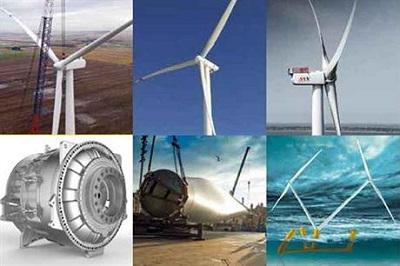Four words: levelised cost of energy. That was the driving force for the wind-power industry's research and development departments during 2017. Wind energy is entering a new era, increasingly cost-competitive with the traditional generating sources, no longer dependent on subsidies and support schemes. It has to stand on its own feet on economic grounds.
Classes and criteria
Wind turbines are judged in three classes: up to 2.9MW, 3MW-plus and offshore. There are also selections for drivetrains, rotor blades and the year's most promising innovations.
To qualify in the turbine classes, the model needs to have been made available for commercial order in the past 12 months, with at least one prototype installed and operating. Working prototypes are also required in the components categories.
Radical thinking and innovative technology are only part of our criteria. Among other things we examine the quality of the product's design and manufacture, its track record, impact on the market - including numbers sold, industrialisation stage and expected advancements, service friendliness and reliability-enhancing aspects. The key question is simply: does it generate more electricity when required, and at a lower upkeep cost?
Fast forward
Windpower Monthly's annual Turbine of the Year feature has been running since January 2013. Plans are now under way for further expansion of the judging categories to highlight other aspects of the global wind energy industry beyond the technology and hardware. We expect to bring you further details of the wind-power "Oscars" during the course of 2018.
KEY TO TABLES
-BDFIG _ brushless doubly fed induction generator
-C&GFRE _ carbon and glass-fibre reinforced epoxy
-DD _ direct drive
-DFIG _ doubly fed induction generator
-EESG _ electrically excited synchronous generator
-GFRE _ glass-fibre reinforced expoxy
-HH _ hub height
-HSG _ high-speed geared
-IG _ induction generator
-LSG _ low-speed geared
-MSG _ medium-speed geared
-OEM _ original equipment manufacturer
-PCVS _ pitch-controlled variable-speed
-XXX _ choice in generators
IEC - class site ratings I, IIA, IIIB, etc (high, medium and low wind in descending order; A-C is turbulence intensity in descending order; S meets special conditions outside class requirements
ONSHORE TURBINES UP TO 2.9MW
Still the most fiercely contested and volume end of the market, especially in China and the US.
Best in class: Vestas V116-2.1MW
ONSHORE TURBINES 3MW-PLUS
Fast-growing sector, especially in low- and medium-wind sites in developed markets
Best in class: Goldwind GW140/3MW
OFFSHORE TURBINES
Consolidating market draws breath before the next big step into 10MW-plus waters
Best in class: MHI Vestas V164-9.5MW
DRIVETRAINS
Sector adapting to higher power outputs and changing grid demands
Best in class: ZF medium-speed gearbox for MHI Vestas V164-9.5MW
ROTOR BLADES
Ease of manufacture plays a growing role in development as blades continue to grow in size
Best in class: Siemens Gamesa B82 rotor blade
INNOVATION
Wind power has not lost its ability to surprise, as this year's selection indicates
Best in class: Aerodyn 15MW SCDnezzy2
Source/ Fuente: https://www.windpowermonthly.com


Publicar un comentario